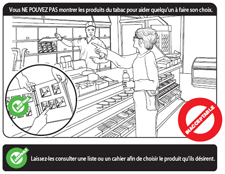 I recently spoke to Dave Bryans from the Ontario Convenience Store Association about Tobacco Control in Canada. Like the UK, legitimate tobacco products are highly taxed and as Bryans explained, the introduction of a display ban in 2008 changed tobacco retailing dramatically.
I recently spoke to Dave Bryans from the Ontario Convenience Store Association about Tobacco Control in Canada. Like the UK, legitimate tobacco products are highly taxed and as Bryans explained, the introduction of a display ban in 2008 changed tobacco retailing dramatically.
The ban is enforced strictly in c-stores, with 200 Tobacco Inspectors employed to carry out test purchasing. If a retailer is found violating the law twice in a 5 year period they will lose their right to sell any tobacco product and face a fine.
Prior to 2008 90% of the tobacco market was through convenience stores; according to Bryans around 65% of the cigarette and tobacco market is now contraband. Illicit cigarettes sell for around C$10 for 200, compared to C$70 to C$80 for the tax-paid equivalent in convenience stores. This has put immense pressure on stores, with an of average three closing everyday despite assistance.
- Smoke Free Ontario have produced a guide demonstrating what is legal when selling tobacco products
- The Canadian Convenience Store Association’s certified on line training aid We Expect ID and in-store marketing material advises store employees and customers about age compliance.
So what does this say for the UK?
Patrick Basham’s ‘Canada’s ruinous tobacco display ban: economic and public health lessons’ looks at all four countries where display bans have been implemented and concludes that they are ineffective not just economically but also in reducing under-age smoking. In Canada, while there is not currently enough data to see the long term impacts on youth smoking, Bryans believes that tobacco remains extremely accessible to teenagers.
What there is evidence for is the severe damage caused to the convenience store sector.



Comments
This article doesn't have any comments yet, be the first!